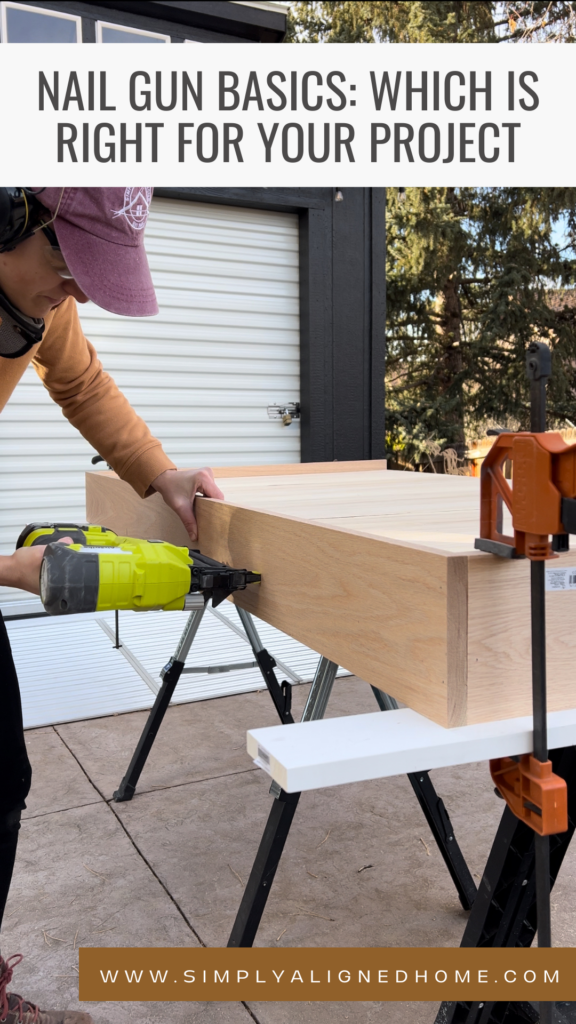In this article we’re diving into the world of nail guns to explore the differences between pin nailers, finish nailers, brad nailers, framing nailers and staplers.
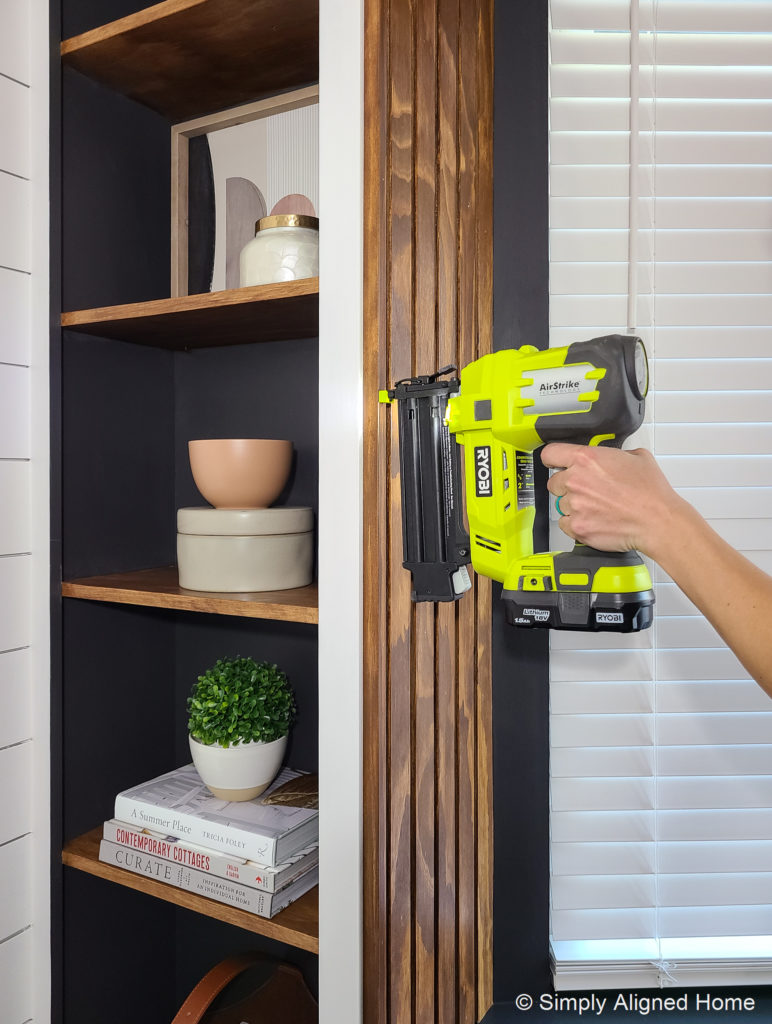
Have you ever found yourself standing in the tool aisle, wondering which nail gun is the right pick for your project? Well, you’re not alone.
Whether you’re crafting a delicate piece of furniture or tackling some home improvement project, choosing the right nail gun can make all the difference. When starting out you might wonder why there are so many different types of nail guns. I thought the same thing until I learned what each one did!
So let’s get a little technical while keeping things light and informative as I share the differences between nail guns. At the end of this article I will also share some very important safety tips to operating these tools.
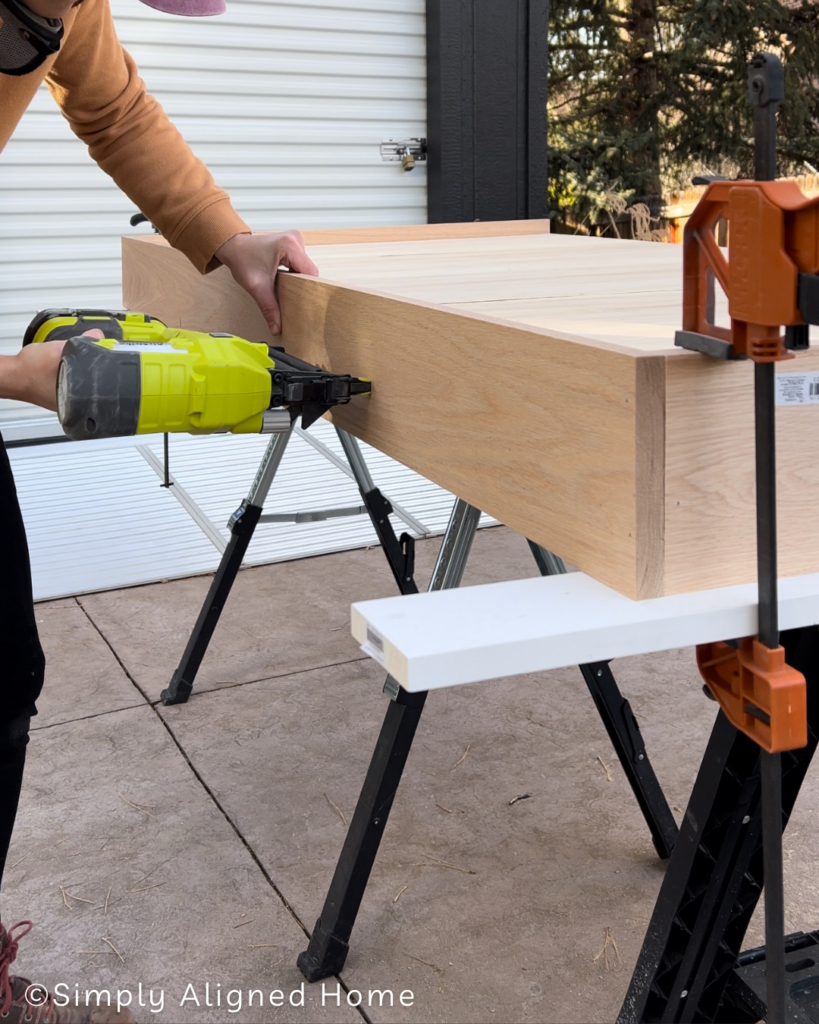
**This post contains affiliate links to products that I used or recommend. If you purchase something through an affiliate link, I may receive a small percentage of the sale at no extra cost to you. I really appreciate your support!**
Pin Nailers
What is a Pin Nailer?
Starting off with the pin nailer, this nail gun is one of the most precise tools in the family of nail guns. It uses headless, fine nails—often referred to as pins—that typically range from 23 to 21 gauge and can be as long as 2 inches.
These nails are so thin that they leave nearly invisible holes after driving into the wood. Which makes using wood putty or sanding often unnecessary. Since the nails are so tiny and headless this makes the pin nailer an excellent choice for delicate trim work where aesthetics are crucial.
Some common ways to use a pin nailer is in attaching delicate trim pieces, assembling small furniture, crafting, and cabinetry work. They are also perfect for securing thin veneers and detailed moldings where larger fasteners might cause damage or be too visible.
Advantages of a Pin Nailer
The primary advantage of using a pin nailer is its ability to handle delicate tasks while securing the surface at the same time. The tiny headless pins drive cleanly into the wood, making this tool indispensable for fine finish work.
Another benefit is that pin nailers are typically lightweight and easy to maneuver, allowing for extended use with minimal fatigue.
Limitations of a Pin Nailer
As much as I love my pin nailer the nail guns do have some limitations. The pins lack the holding power of larger nails, making them unsuitable for structural applications or heavy-duty projects. They are also not recommended for hardwoods or thicker materials where a more heavy-duty nail gun is necessary.
Additionally, the cost of a pin nailer and its nails can be higher than other types of nail guns, which might be a consideration for hobbyists or occasional users.
Brad Nailers
What is a Brad Nailer?
Say hello to the middle man, the brad nailer! The brad nailer is a favorite among woodworkers and DIYers for its versatility and ease of use.
This nifty tool is tailored for 18-gauge nails, which are slightly thicker than those used by pin nailers but thinner than finish nails. The brad nailer strikes a perfect balance, making it ideal for a variety of projects where you need more hold than a pin nailer, but can offer less bulk than a finish nailer.
Brad nailers are fantastic for attaching lightweight trim work, building picture frames, and crafting detailed paneling.
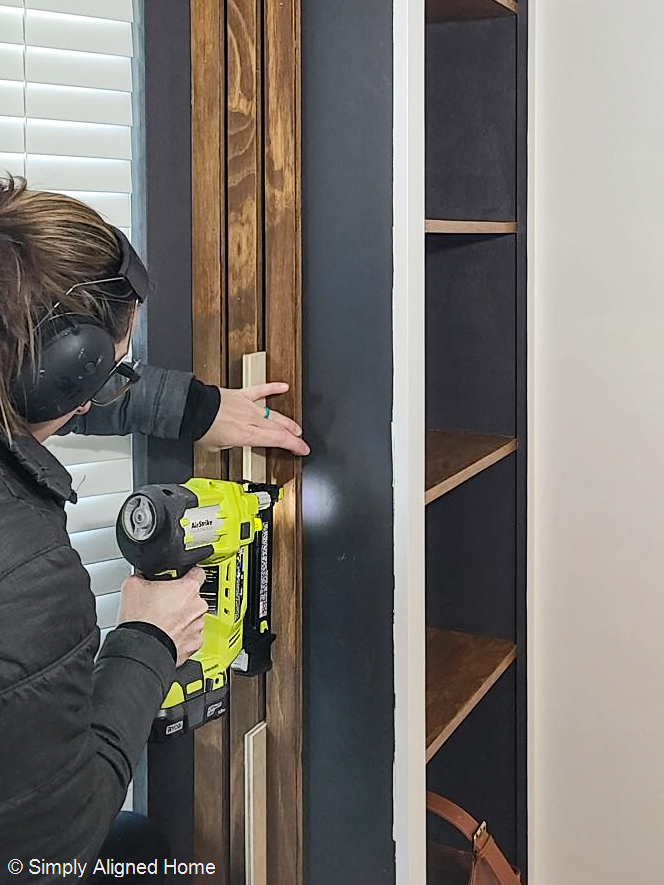
Advantages of a Brad Nailer
One of the biggest perks of using a brad nailer is its ability to handle tasks that are too delicate for a finish nailer yet too demanding for a pin nailer. The nails used are small enough to be discreet, usually leaving only a tiny hole!
Plus, the brad nailer is known for its precision and is less likely to split your work material, giving you a clean finish every time.
Limitations of a Brad Nailer
While the brad nailer is a powerful tool, it’s not suited for heavy-duty structural applications where larger nails are required.
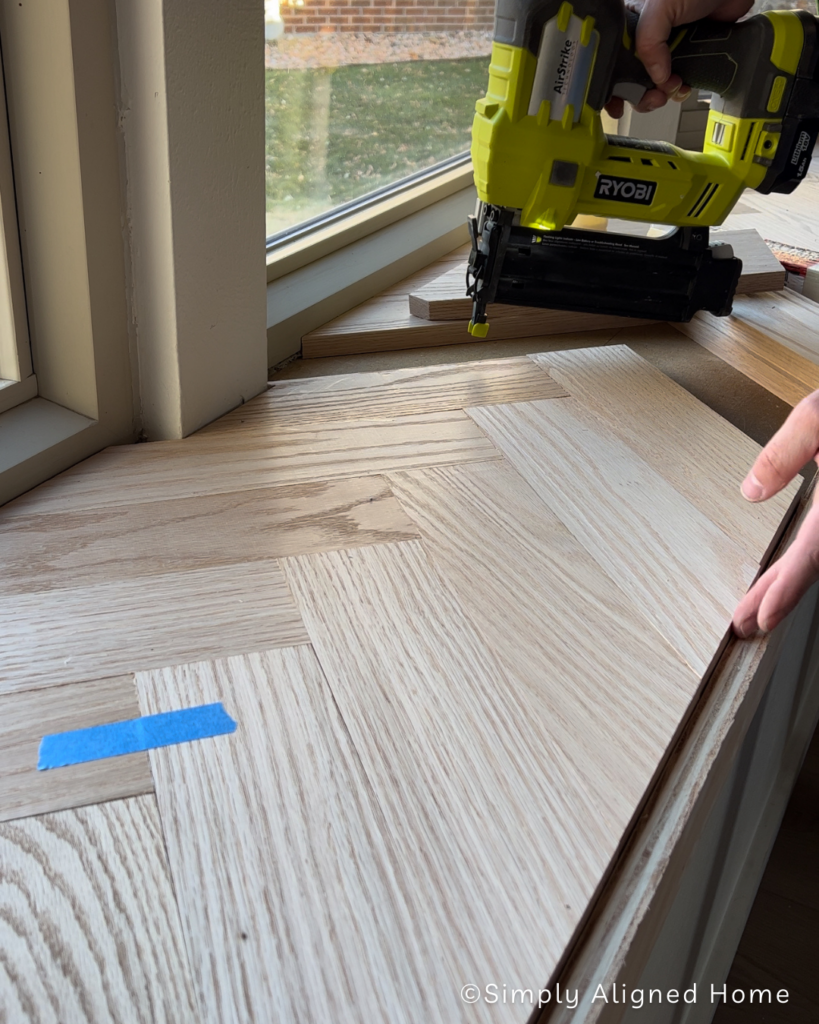
Finish Nailers
What is a Finish Nailer?
Next up we have the finish nailer, a true workhorse in the nail gun family! This tool is slightly more powerful than its cousin, the brad nailer, and it’s designed to handle nails (usually 15 to 16 gauge).
Finish nailers are perfect for those projects where you need a bit more hold than a brad nailer can provide.
Finish nailers are the go-to for a range of tasks including installing baseboards, door and window trim, and crown molding. They also shine when used for assembling cabinets and building furniture. If you’re working on a project that involves medium-sized trim or where the nails might need to support a bit more weight, a finish nailer is your best friend.
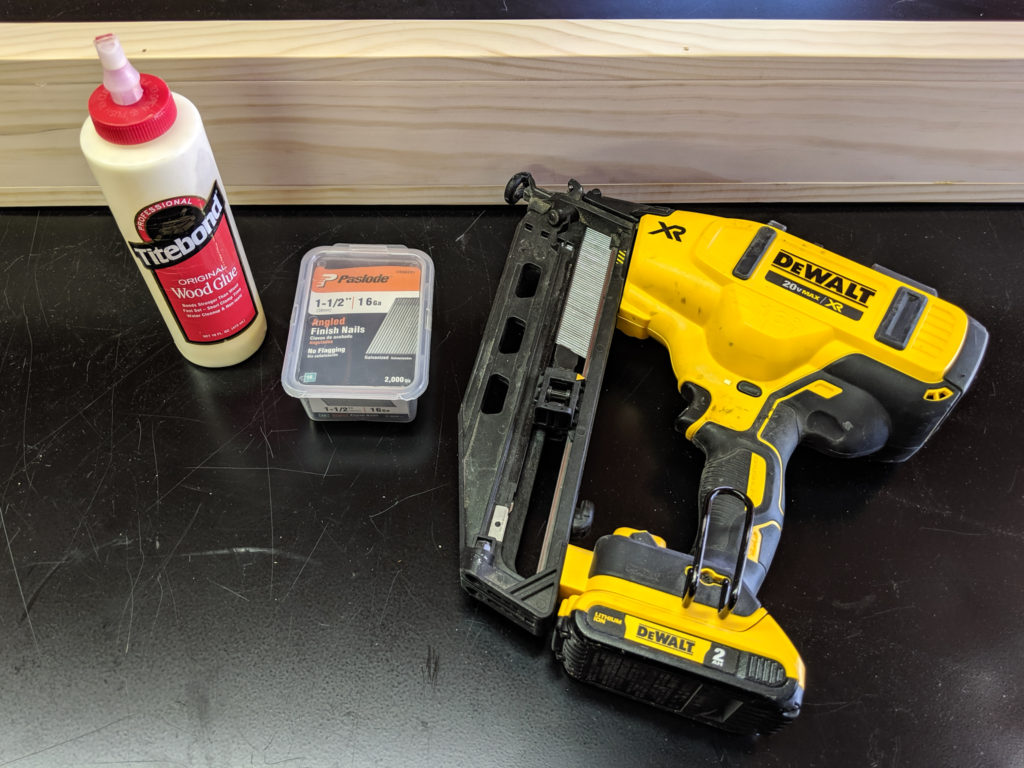
Advantages of a Finish Nailer
The magic of the finish nailer lies in its balance of size and power. The nails it uses are strong enough to secure firmly, yet still small enough to be discreet, often requiring just a touch of filler to make them disappear into your woodwork.
Finish nailers are generally easy to handle and can work with a variety of materials, making them incredibly versatile!
Limitations of a Finish Nailer
While finish nailers are fantastic for many tasks, they aren’t suitable for very delicate work where a smaller gauge nail is necessary. They can be a bit overkill for very light trim work, where a pin or brad nailer might be more appropriate.
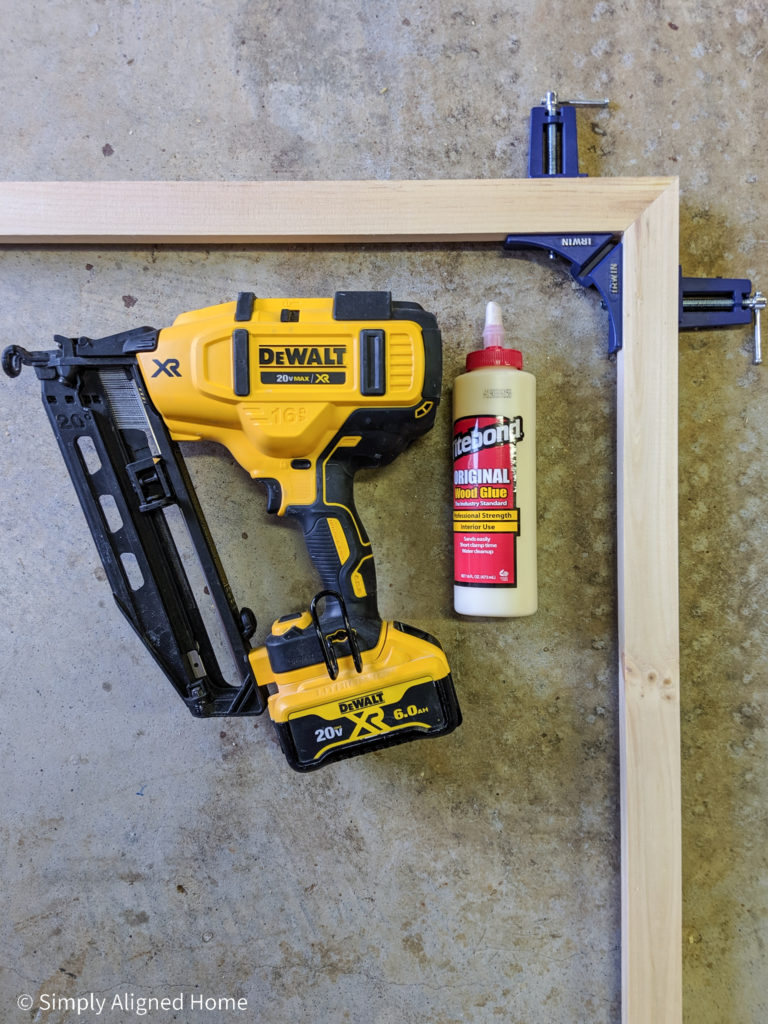
Framing Nailers
I won’t go into much detail about the largest of the four nail guns which is the framing nail gun. This isn’t a nail gun that you would use for every day projects.
The uses for a framing gun would most likely include:
- Building Wooden Frames: As the name suggests, framing nailers are ideal for constructing the wooden frameworks of houses, including walls, floors, and roofs.
- Decking: A framing nailer can speed up the process of laying down deck boards.
- Fencing: For building wood fences, a framing nailer can drive nails quickly and efficiently.
- Subflooring: Installing subfloors is another task where framing nailers excel.
Staplers
What is a Stapler?
Let’s talk about staplers—not the kind you’d find on an office desk. Staplers use wide, flat wires instead of nails. Which provides a different kind of holding power that’s ideal for certain projects. They can handle everything from home repairs to creative craftwork.
Some common uses for staplers are tasks like fastening fabric to wood in upholstery projects or securing thin materials such as house wrap in construction. They are also incredibly useful for crafting, especially when working with materials that might tear under the pressure of nails.
You can see from the picture down below I used a stapler to attach the stair runner to our stairs in our stairs makeover.
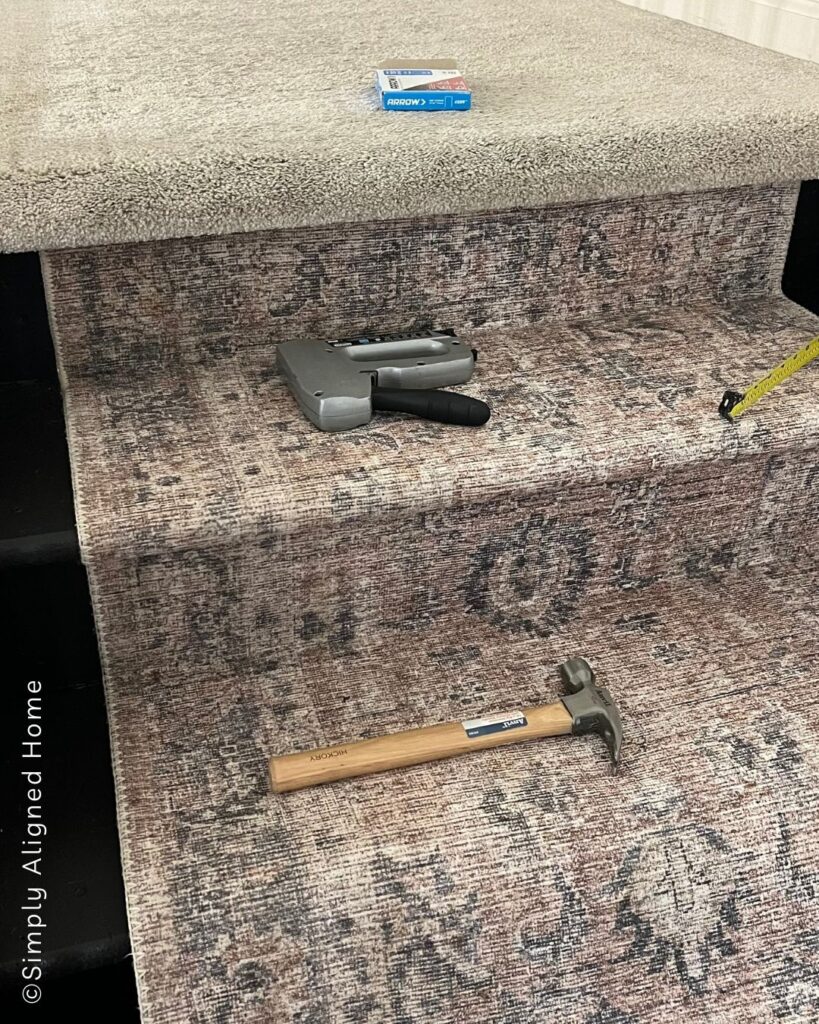
Advantages of a Stapler
The main advantage of using a stapler is they are generally easy to use and work quickly. This makes them a go-to for fastening jobs that require numerous attachments in a short period. Perfect for upholstery and other fabric-related projects.
Limitations of a Stapler
Though incredibly useful, staplers aren’t suitable for tasks requiring deep penetration or structural strength, such as heavy woodworking or framing. The staples can also be more visible than nails, which might not be desirable in some fine finish work.
Additionally, while they’re great for many projects, they just don’t replace the specific capabilities of a dedicated nail gun!
Types of Staplers
When choosing a stapler, you have three options to select from. A pneumatic model, which requires an air compressor, a battery-operated stapler for cordless convenience and portability or just a manual one where its all hand power!
- Manual Staplers: These are the most common type of staplers used in light-duty tasks. They are handheld devices that require manual force to drive the staple through.
- Battery Powered Staplers: Battery powered staplers are ideal for high-volume tasks and provide consistent stapling with minimal effort.
- Pneumatic Staplers: These staplers are powered by air compressors and are used for industrial or construction purposes. Pneumatic staplers are much more powerful than manual or battery powered models and are typically used for heavy-duty applications such as securing roofing materials, house wrap, or upholstery work.
Nail Gun Safety
When using a nail gun or stapler there are some safety measures you should take. Nail gun safety is crucial to prevent injuries so I wrote up a few of the essential safety tips when using nail guns:
- Read the Manual: Before using any nail gun, thoroughly read and understand the manufacturer’s manual to get familiar with the specific model.
- Use the Right Nails: Ensure you are using the correct type and size of nails for your nail gun and project to prevent misfires and jams.
- Keep Bystanders Away: Make sure others maintain a safe distance from the area when you are using the nail gun.
- Use Safety Trigger Mechanisms: Most nail guns have sequential trigger mechanisms, as they are safer than contact triggers. You have to be holding down the right triggers in order for the nail gun to fire.
- Disconnect During Loading and Clearing Jams: Always disconnect the air hose or battery before loading nails or clearing jammed nails from the nail gun.
- Be Mindful of What’s Beyond Your Target: Always be aware of what lies beyond your target to prevent accidents, especially in environments with thin materials that nails could penetrate. Think of water pipes!!!
- Depth of Nails: Almost all nail guns will come with a dial to control the depth of your nails. Make sure to read the manual to see if your nails are at the correct depth!
- Keep Hands Away from the Nailing Area: Always ensure that your hands and other body parts are kept at a safe distance from the nailing area when using a nail gun. Nail guns can experience kickback, a sudden recoil that happens when the nail is driven into a hard or improper surface. This safety precaution helps protect you from unexpected movements and ensures that your fingers and hands are out of harm’s way.
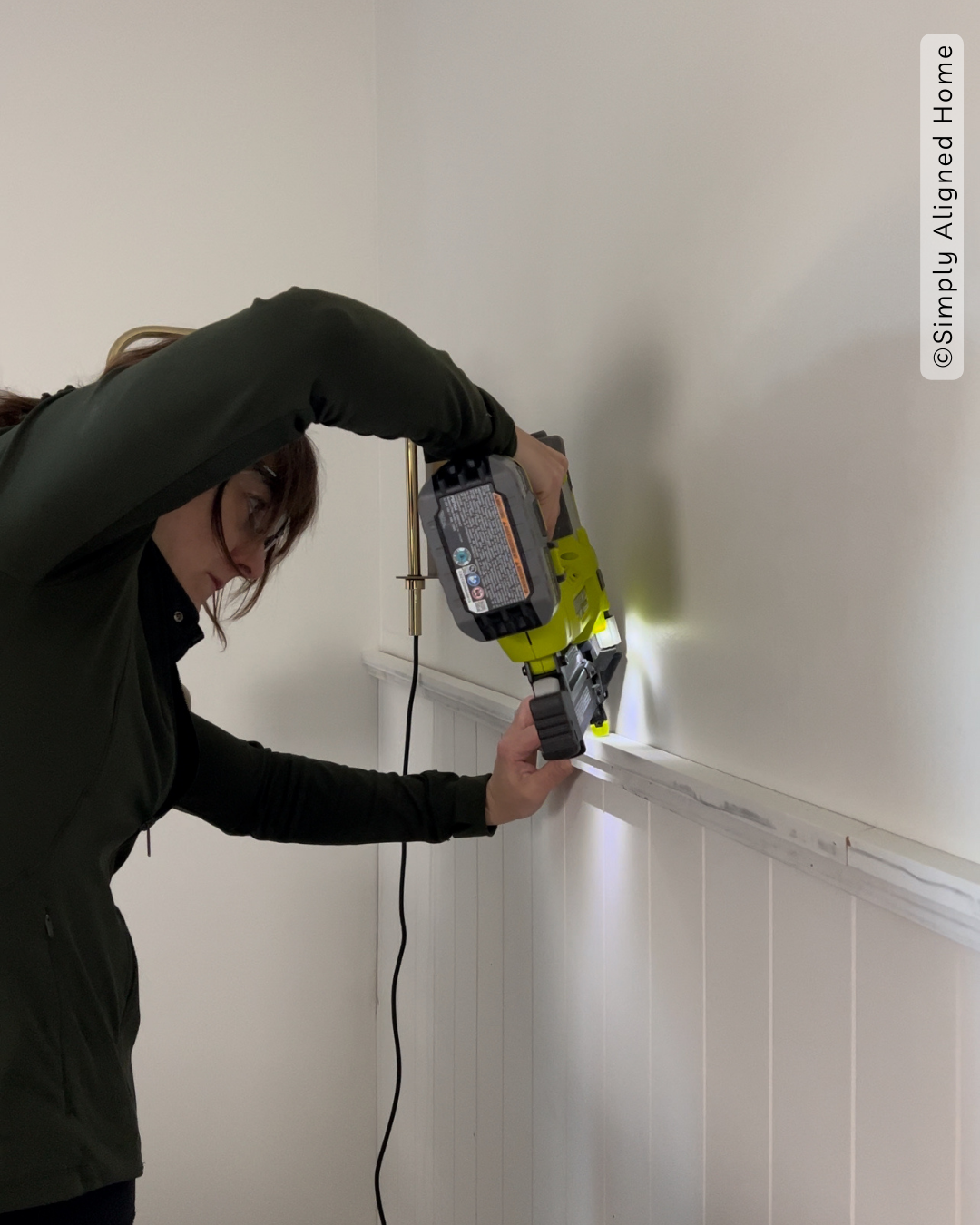

**Note: I am not a professional and do not claim to be an expert. Please be sure to always read instructions for all tools and products. Safety is very important and should be your top priority. Wear necessary protection when using tools (eye wear, hearing protection, gloves, etc.) and dust masks when sanding or cutting. Simply Aligned Home is not responsible for any injury or damage. All of my designs are not professionally designed and are for private use only.**
